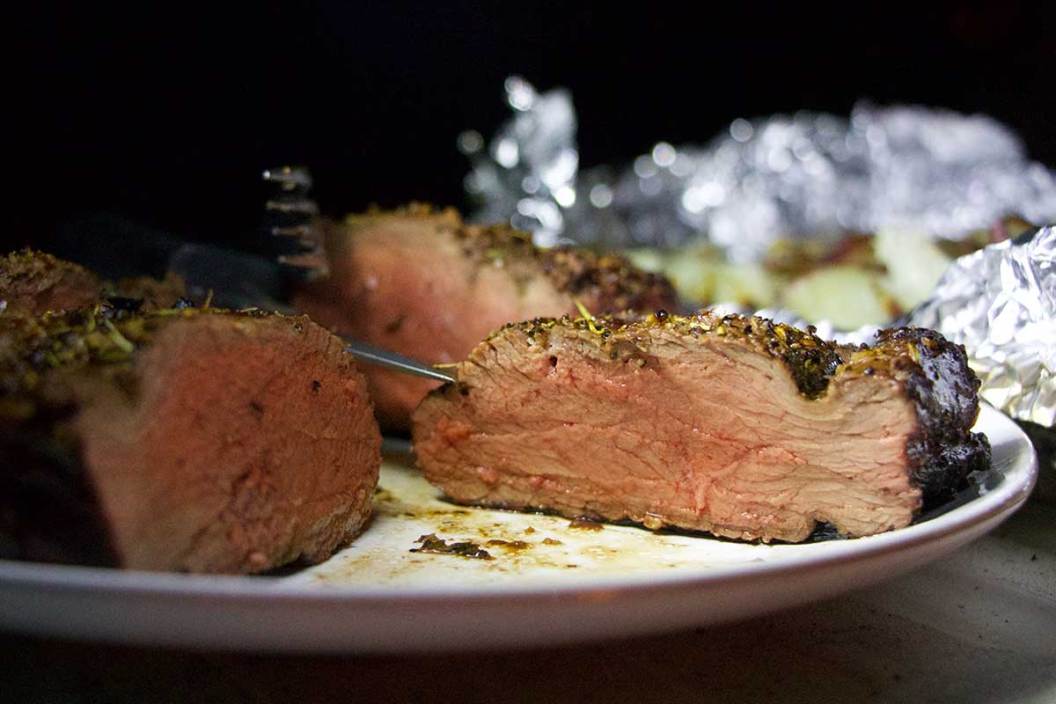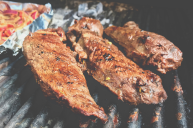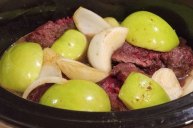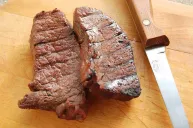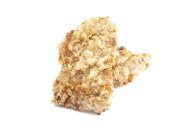Whether you're scouting in the mountains or enjoying a home-cooked wild game meal after filling a tag, every element of elk hunting is memorable. However, if your elk meat isn't properly taken care of, that homemade meal can be unforgettable for the wrong reasons. Always remember to cool down your meat, keep the bugs off, and get it in an icy cooler as soon as possible. By doing so, you're ensuring over a year's worth of deliciously memorable elk meals.
Honestly, if you're familiar with cooking wild game, elk steak is easy to prepare. It has a mild flavor, and steak cuts are very tender when cooked rare. Elk steak absorbs any additional flavors you add to it, whether it's garlic, rosemary, red wine, red chili, paprika, or even finely ground coffee. When cooked with an adequate amount of additional fat (I prefer butter or bacon fat), elk steak's flavor really shines.
The recipes listed below will be difficult ones to forget for all the right reasons. Just remember to remove all the silver skin, let the steaks come to room temperature prior to cooking them, and most importantly, don't overcook your steaks!
Deep-Fried Elk Tenderloin Steaks
Picture this: it's Thanksgiving Day and you're preparing to deep fry a fresh Butterball. Your propane tank is full, your frying oil is up to temp, and you're ready to dunk your turkey into a hot vat of deliciousness. However, when you go to get your turkey, you notice that elk tenderloin in the fridge. You think to yourself: Should I do it? You take it out, dry it off, spice it up, and bring it outside. After just a few short minutes, you remove the steak from the deep fryer and let it rest for five more. It's decided: fried elk steak is delicious. Scale things down and try it in the kitchen after slicing the steak into medallions. You'll love it.
Supplies
- A deep fryer, Dutch oven, or other deep pot you use for frying
- A meat thermometer
- Long-handled metal tongs
Ingredients
- 1 elk tenderloin, sliced into evenly-sized medallions
- 1 cup flour
- 1 tbsp chili powder
- 1 tbsp garlic powder
- 1 tbsp paprika (smoked if you've got it)
- 1 tbsp black pepper
- Enough frying oil to completely cover your tenderloin steak (I use vegetable oil)
- Salt to taste
Directions
- Cover the bottom of your Dutch oven with about an inch of oil. Heat it to 350 degrees Fahrenheit.
- While your oil is heating, mix your dry ingredients together. Dip your elk steak medallions into the mixture, making sure they're completely covered. Set aside.
- When your oil hits 350, add several medallions to the oil, being careful not to crowd too many in. After just a minute or two, when the bottom has browned, flip each medallion over. When the topside has browned, remove them from the oil and let them rest. Take the temperature of your steaks and verify that they are around 120 degrees F. Note that thinner steaks may be hotter than thicker slices and might cook differently.
- Continue frying your medallions in rounds until they're all cooked. Let them rest for five minutes and enjoy them while they're hot!
Elk Backstrap Over the Fire
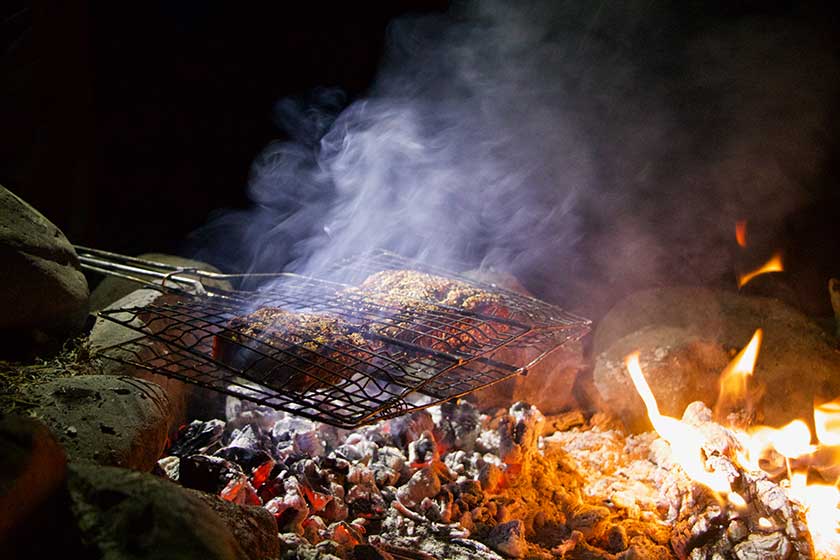
Gabriela Zaldumbide
After my hunting partner shot his first archery elk a few years ago, we camped the following weekend and brought some elk backstrap with us. Cooking elk backstrap over the fire is a delightful way to share a wild game meal, especially with the folks you hunt with. Eating the meat in the very same area the bull lived in really brought the hunt full circle. Plus, the smokiness from the campfire adds an extra layer of depth to your steak, making an already delectable cut of meat even more mouth-watering.
If you're cooking fresh-never-frozen wild game, note that the meat should rest for at least 24 hours prior to cooking it. This allows it to fully go through rigor mortis post-death, increasing its tenderness and avoiding a less-than-satisfying meal. I've made the mistake of cooking venison meat too soon after the animal died only once; it was heartbreaking to bite into a chunk of fresh venison tenderloin only to have it be chewy. It wasn't just a little chewy, either. The meat was straight-up hard to eat. It was quite unpleasant. Just like you would at home, let the meat come to room temp prior to cooking. Salt it, add any other steak seasonings you enjoy, and remove it from the fire after it reaches 120 degrees F. If there are leftovers, stash them in the cooler overnight and enjoy a breakfast of steak and eggs in the morning. Your campmates will thank you.
Supplies
- A campfire with coals
- A nonstick grill basket or another metal grate you can set over a campfire
- Tongs
- A meat thermometer
Ingredients
- 1 large cut of elk backstrap steak
- 1 tbsp Montreal steak seasoning
- 1 tsp garlic powder
- 1 tsp black pepper
- Salt to taste
- Butter to melt on top
Directions
- Light your campfire and let it burn down. Create a nice coal bed on one side of the fire pit to set your grill basket over. Use a few rocks to balance out your grilling grate so you don't have to hold up your steak the entire time.
- While your coals are forming, prepare your steak. Remove all the silverskin, dry it off, season it up, and set it on the grilling grate.
- Add a pat of butter to the top of the steak. Once the bottom of the elk backstrap is browned to your liking, flip it over and cook the topside. Add a little butter to the other side of the steak. When the top is browned, stick the meat thermometer into the steak and pull it off the coals when it reaches an internal temperature of 120 degrees F.
- When it's done, let the elk steak rest for 10 minutes prior to slicing into it. Now is a good time to let another pat of butter melt on top of it, too. Serve alongside your favorite campsite side dishes like mac n cheese, instant mashed potatoes, or cornbread.
Cast Iron-Seared Elk Sirloin Steaks
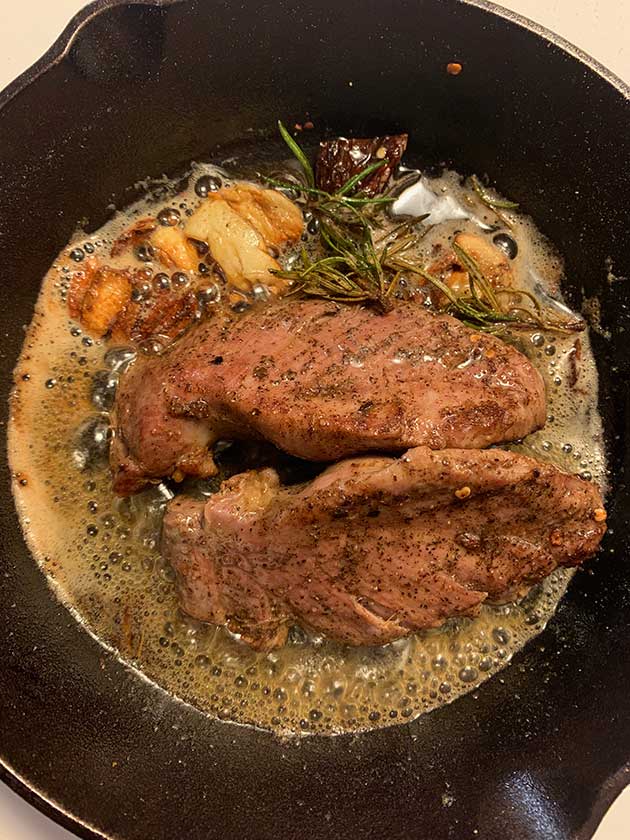
Gabriela Zaldumbide
One can't go wrong when searing elk sirloin cuts on a hot, well-seasoned cast iron skillet. Equally tasty as it is easy to cook, it's hard to mess this recipe up.
I love cast iron-seared elk steaks because the pan does an incredible job of holding all the juices, melted fats, and flavors. De-glazing your cast iron post-sear is a foolproof way to make a simple sauce to pour over your elk steak, too. You're bound to impress your friends and family in the kitchen with this elk steak recipe.
Supplies
- A cast iron pan or skillet
- A meat thermometer
Ingredients
- 1 elk sirloin, cut into individual steak-sized portions and brought to room temperature
- 3 tbsp butter or bacon fat (or other preferred fat to cook steak in)
- 2 springs of fresh rosemary
- 2 sprigs of fresh thyme
- 4 cloves of fresh garlic, peeled and smashed
- Salt and pepper to taste
- A little whiskey to deglaze your pan
Directions
- Heat up your cast iron pan to medium-high. Melt your cooking fat in your pan while it's warming up.
- Season your room temp elk steaks with salt and pepper. When your pan is hot, add your steaks to the pan (you might need to cook them in rounds so they don't crowd the pan). Using a spoon or small ladle, baste your steaks with your melted fat.
- Flip your steaks over after the bottom has browned. At this stage, add your springs of rosemary, thyme, and smashed garlic to the pan. They'll begin to brown and become very aromatic as they cook.
- When your steaks reach 120 degrees F, remove them from the pan. Carefully splash a little whiskey into your cast iron to deglaze it. Swirl together your melted fat, whiskey, fresh herbs, and garlic cloves. Once mixed, pour them on top of your steaks.
- Allow your steaks to rest for 10 minutes. Serve alongside roasted vegetables, biscuits, or your other favorite seasonal sides. Enjoy the flavors of your successful elk harvest!
